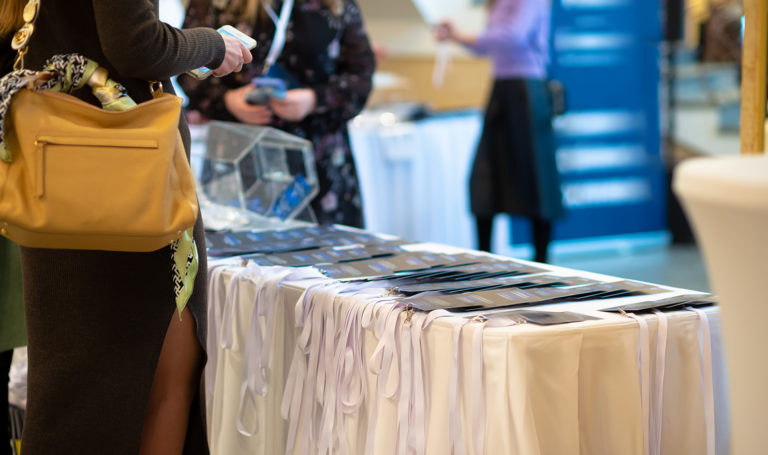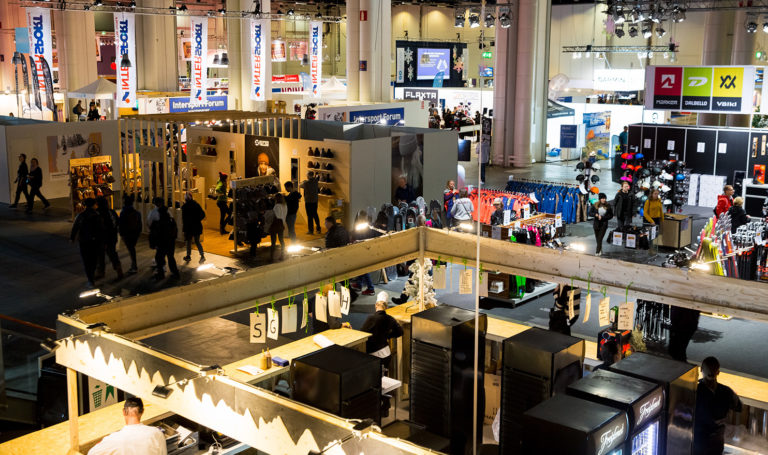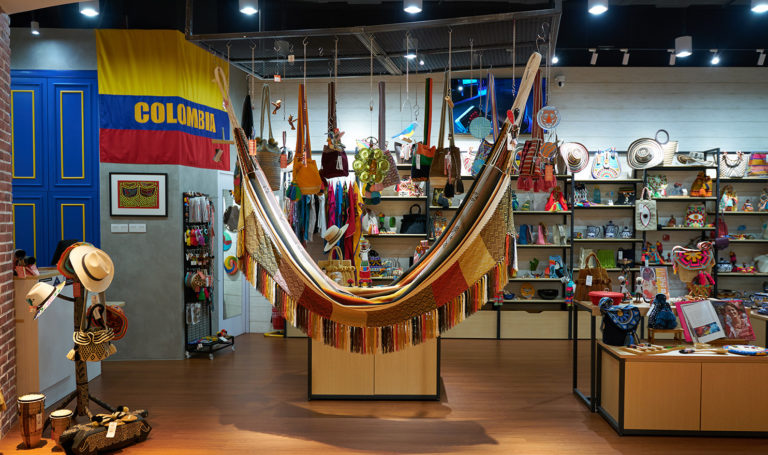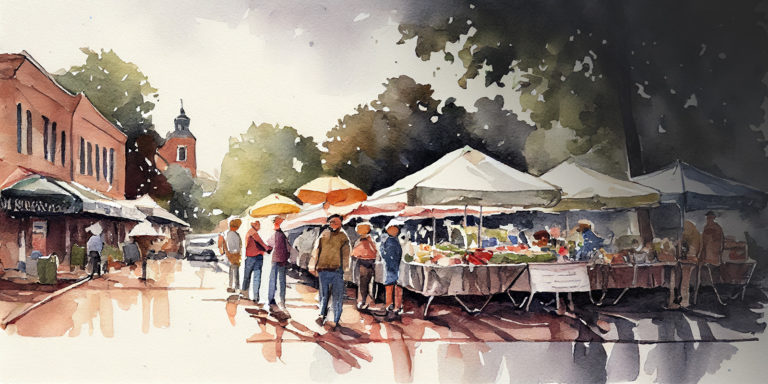UPDATED: August 28, 2024
It’s showtime! Are you prepared?
From designing your booth to perfecting your product pitch, there’s a lot of work that goes into making sure your presence at an event is successful.
With our trade show planning guide, you can make sure you’re ready for anything that comes your way.
Let’s get planning!
Trade Show Insurance
How Do You Prepare For a Trade Show?
Trade show planning as an exhibitor is an important part of any successful event. To guarantee that you are ready for your next event, it’s important to start by researching the trade show and creating a list of objectives. This will help you understand what types of materials you need to purchase, how much time and resources you’ll need to allocate, and what kind of marketing campaigns you should implement leading up to the event.
Step 1: Make a Trade Show Planning Timeline
We recommend you start your trade show prep as far in advance as possible, typically 2–6 months before the event. Doing so will give you ample time to plan, prepare, and travel to the trade show as seamlessly as possible.
Many events also open vendor and exhibitor applications months in advance, so keep an eye on the trade show site for application dates.
Creating a timeline for each task is also essential. This will help keep you on track and make sure that everything is completed in plenty of time before the big day arrives. Your timeline can include tasks like:
- 6 months before: Create product samples or inventory
- 4 months before: Order promotional items like flyers, banners, or tablecloths
- 2 months before: Preparing talking points and sales pitches
- 1 month before: Practicing your booth set-up and take-down

Step 2: Calculate Your Trade Show Budget
When it comes to budgeting, there are several factors to consider. Start by calculating the following expenses:
- Vendor application fees
- Booth displays
- Product inventory and packaging
- Marketing materials or promotional items
- Transportation or lodging expenses
Identifying what types of materials you need to purchase ahead of time can also help in this regard — as well as help you avoid unnecessary costs.
Step 3: Create a Trade Show Marketing Strategy
Finally, plan a marketing campaign that informs your audience of the event, attracts people to your booth, and allows you to connect with attendees after the event ends.
A good marketing strategy typically includes:
- Making social media posts to build excitement and interest in your booth before the event
- Developing handouts or brochures highlighting the features of your products or services
- Planning contests for your booth or making freebies branded with your logo and contact information
It’s important to remember to collect contact information, like email addresses, from people you meet at the trade show so that you can stay in touch after the event is over. You can try a sign-up form for people to join a newsletter or have the chance to win a prize. This gives you a list of potential customers to reach out to after the event and helps you track your lead generation.
Trade Show Exhibitor Checklist
Exhibiting at a trade show can be an excellent way to raise brand awareness and generate leads. For any event to be successful, it’s essential to have a thorough plan ready before you arrive.
FREE Exhibitor Checklist
Trade Show Exhibitor Tips
Some of our top tips for exhibiting include:
- Get familiar with the event venue
- Design your exhibitor booth layout
- Create a packing list of essential booth items
- Plan your presence at the trade show
- Obtain trade show insurance for exhibitors
Get Familiar With the Event Venue
Taking the time to learn about the layout of the venue and all that comes with it is key. This includes:
- Studying capacity limits so you can estimate the foot traffic at the event
- Knowing your booth size so you bring an adequate amount of display items
- Learning about power needs and if you can run extension chords
- Understanding the local requirements the venue, city, or event promoter is enforcing
You should also know where the loading and unloading zones are, and plan to have a wagon or cart to help you transport your booth items in and out of the venue.

Design Your Exhibitor Booth Layout
The most common booth size is 10 ft. x 10 ft., and you can typically rent additional space in 10-foot increments to create a 10 ft. x 20 ft. or 30 ft. x 30 ft. space.
The size of the booth should be in proportion to the show space and depend on the type of product or service you are exhibiting. Different booths come with different features and designs, so it’s important to choose one that best suits your needs.
Once you know the amount of space you’re working with, it’s time to map out your design. It should include elements like:
- Placement of displays and signage
- Aisles and walkways for customers
- Types of lighting, flooring, and walls
- Fun extras, like seating, screens, or games
Other exhibitors will be competing for attention at the show too, so make sure your booth stands out from the crowd. Research other beusinesses you know are attending to see what kind of booths they’ve created in the past and how you can differentiate yours from theirs.
Create a Booth Packing List
Create a list of everything needed for a successful event, like:
- Banners and signs
- Posters and flyers
- Tables and chairs
- Business cards
- POS system and cash
- Extra inventory
- Branded merchandise
It’s also good to bring backup materials to swap out an item that may break and heavy-duty tape to secure wires and prevent anyone from tripping over them.
If your event is outdoors, we recommend having items to secure any tents, umbrellas, or shade covers. You can use tie-downs, stakes, sandbags, or zip ties to help secure objects from wind gusts.

Plan Your Presence at the Trade Show
Planning your presence involves preparing any speeches, sales pitches, or talking points you’ll share with visitors at your booth.
You should also plan on assembling a team to assist you during the trade show. We suggest having 3 additional team members:
- A person in charge of chatting with visitors
- A person focusing on restocking and keeping the booth clean
- A person to help process and package sales
Having a crew lets you tag-team responsibilities and rotate through a schedule. This means everyone gets a break to grab food, use the bathroom, and network with other exhibitors.
It’s helpful to plan out a schedule while you’re at the event, so you and your team know your roles and keep your booth operations running smoothly.

Obtain Trade Show Exhibitor Insurance
Trade show insurance is an essential for any exhibitor or vendor. This type of coverage provides protection for you, the venue, and the event promoter in the case of an incident involving property damage or third-party liability.
Exhibitor insurance is designed to pay for medical bills, repair costs, or lawsuits from instances like:
- An event attendee trips over an electrical wire in your booth and dislocates their hip
- Part of your display scratches up the floor of the event center
- Unexpected wind blows your booth tent into the parking lot, breaking the window of a car and hitting bystanders
- A child running near your booth falls and injures themselves, and the parents sue you for negligence
Regardless if your event requires you to carry insurance, we always recommend getting a short-term general liability policy to insure you while you are at a trade show.
Check Trade Show Planning Off The List!
With the right preparation, you can enjoy a successful trade show experience. So take advantage of our comprehensive trade show exhibitor checklist and get ready for your next event.
Don’t forget to check out our trade show insurance to keep yourself protected, and remember to have fun with the planning process. We wish you the best of luck at your upcoming trade show!










